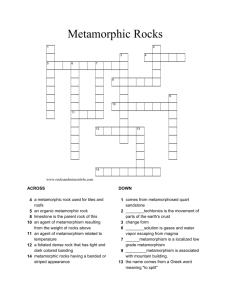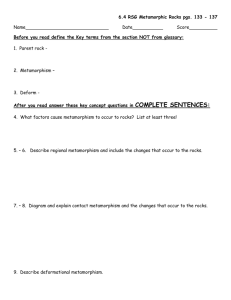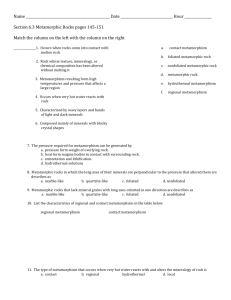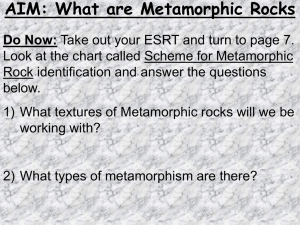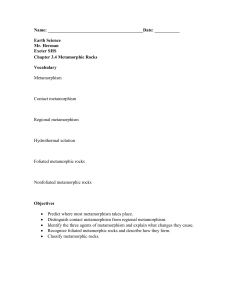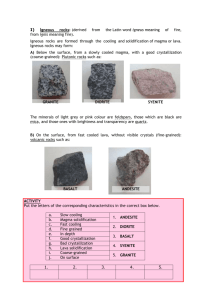GEOL 101
advertisement
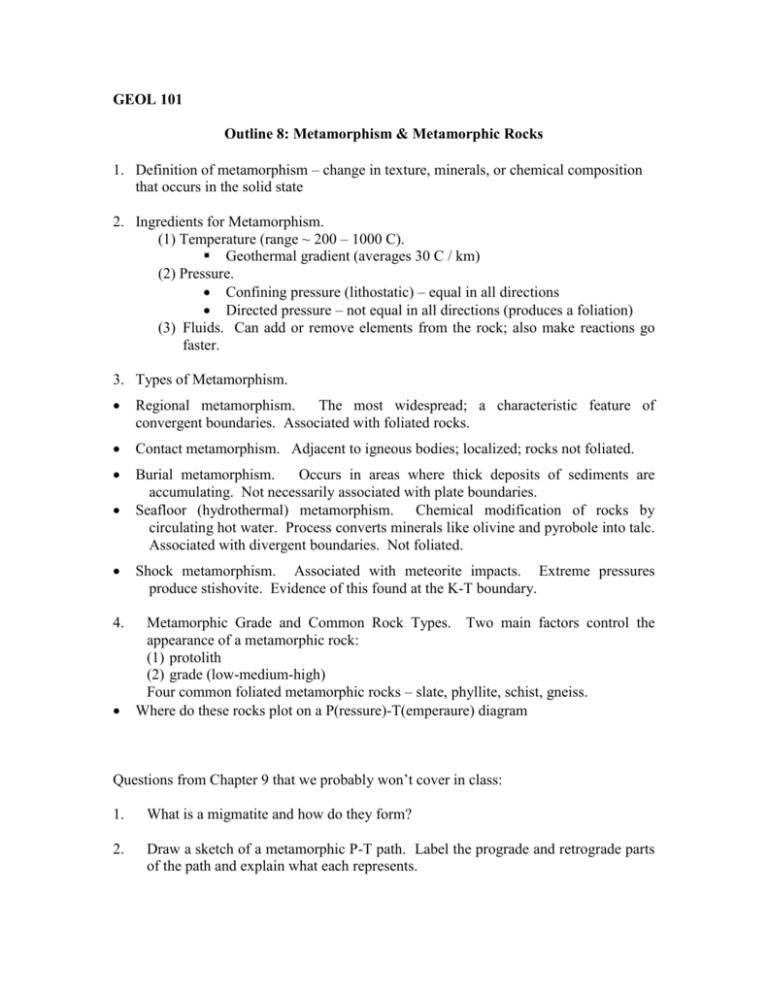
GEOL 101 Outline 8: Metamorphism & Metamorphic Rocks 1. Definition of metamorphism – change in texture, minerals, or chemical composition that occurs in the solid state 2. Ingredients for Metamorphism. (1) Temperature (range ~ 200 – 1000 C). Geothermal gradient (averages 30 C / km) (2) Pressure. Confining pressure (lithostatic) – equal in all directions Directed pressure – not equal in all directions (produces a foliation) (3) Fluids. Can add or remove elements from the rock; also make reactions go faster. 3. Types of Metamorphism. Regional metamorphism. The most widespread; a characteristic feature of convergent boundaries. Associated with foliated rocks. Contact metamorphism. Adjacent to igneous bodies; localized; rocks not foliated. Burial metamorphism. Occurs in areas where thick deposits of sediments are accumulating. Not necessarily associated with plate boundaries. Seafloor (hydrothermal) metamorphism. Chemical modification of rocks by circulating hot water. Process converts minerals like olivine and pyrobole into talc. Associated with divergent boundaries. Not foliated. Shock metamorphism. Associated with meteorite impacts. Extreme pressures produce stishovite. Evidence of this found at the K-T boundary. 4. Metamorphic Grade and Common Rock Types. Two main factors control the appearance of a metamorphic rock: (1) protolith (2) grade (low-medium-high) Four common foliated metamorphic rocks – slate, phyllite, schist, gneiss. Where do these rocks plot on a P(ressure)-T(emperaure) diagram Questions from Chapter 9 that we probably won’t cover in class: 1. What is a migmatite and how do they form? 2. Draw a sketch of a metamorphic P-T path. Label the prograde and retrograde parts of the path and explain what each represents.

